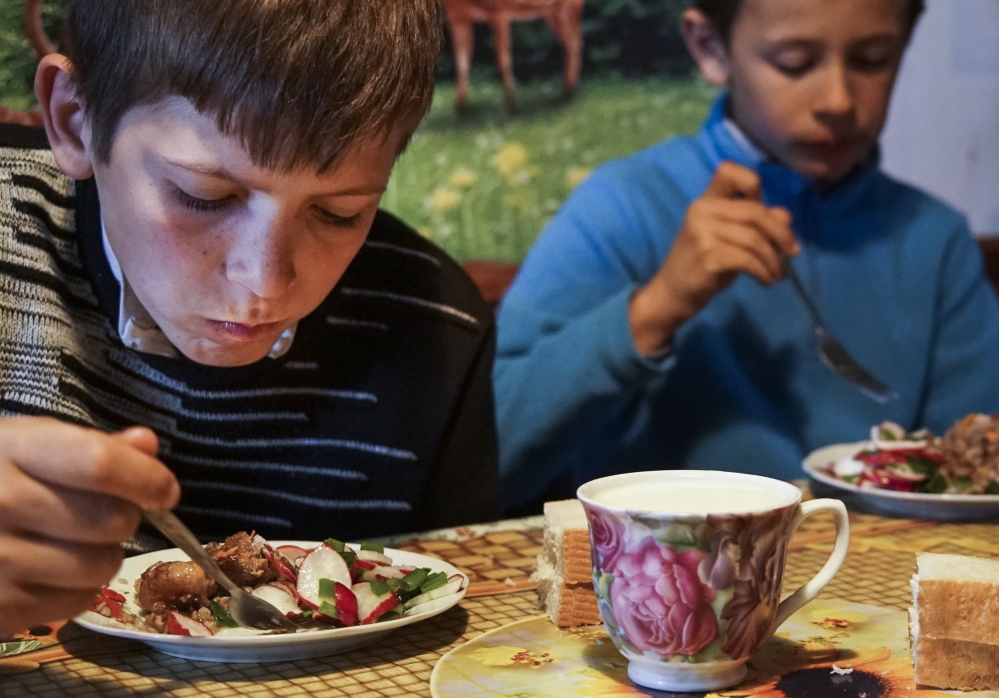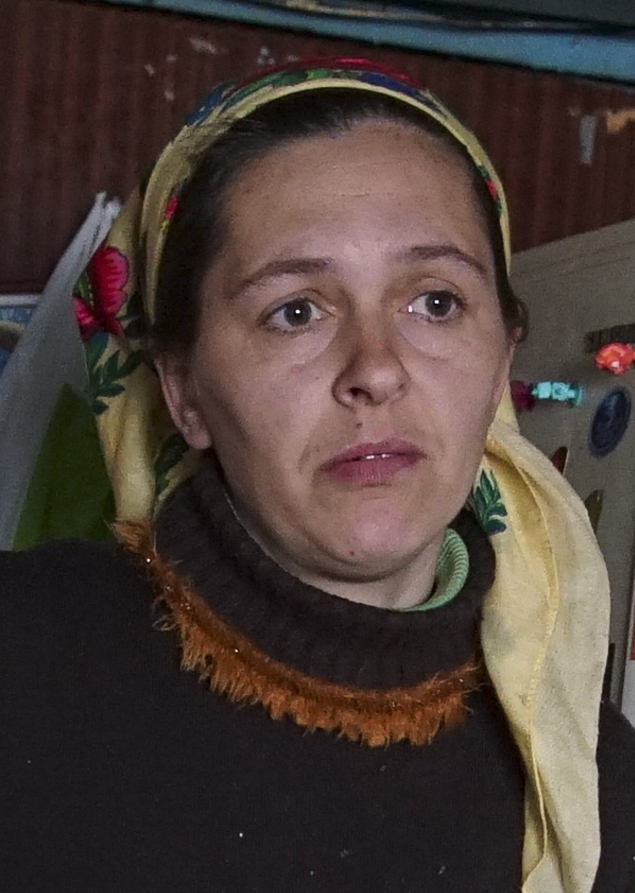ZALYSHANY, Ukraine — Viktoria Vetrova knows the risk her four children take in drinking milk from the family’s two cows and eating dried mushrooms and berries from the forest.
But the cash-strapped Ukrainian government canceled the local school lunch program for 350,000 children last year – the only source of clean food in this village near Chernobyl. So rural families are resorting to milk and produce from land still contaminated by fallout from the world’s worst nuclear accident three decades ago. Vetrova’s 8-year-old son, Bogdan, suffers from an enlarged thyroid, a condition which studies have linked to radioactivity.
“We are aware of the dangers, but what can we do?” said Vetrova, standing in her kitchen after pouring a glass of milk. “There is no other way to survive.”
Vetrova’s family and thousands of others are caught between two disasters: the residue from Chernobyl and the recent plunge of Ukraine’s economy.
After the April 26, 1986, explosion and fire, the most heavily affected areas in Ukraine were classified into four zones. Residents from three of them were evacuated or allowed to volunteer for resettlement. But the village of Zalyshany, 32 miles southwest of the destroyed reactor, is in the fourth zone – not contaminated enough for resettlement but eligible for subsidies to help with health issues.
Ukraine’s Institute of Agricultural Radiology says the most recent testing in the zone showed radiation levels in wild-grown food such as nuts, berries and mushrooms were two to five times higher than what is considered safe.
However, Ukraine’s economy has since been weakened by separatist war in its eastern industrial heartland, endemic corruption and the loss of Crimea, which was annexed by Russia. Last year, the Ukrainian government, which is propped up by billions of dollars in loans from the United States, the European Union and the World Bank, cut off paying for school lunches in Zone 4. There are no official cost figures, but a typical price of about 80 cents would put the program’s funding at about $50 million a year.
“Hot meals in the schools were the only clean food, which was tested for radiation, for the children,” teacher Natalya Stepanchuk said. “Now the children have gone over to the local food, over which there is absolutely no control.”
In 2012, the government halted the monitoring of radioactive contamination of food and soil in Zone 4, which was called the “zone of strict radio-ecological control.” The state has also canceled a program for buying Ferocin, known as Prussian Blue, a substance farmers could give their cattle to hasten the elimination of the cesium-137 isotope.
In the view of Vitaly Petruk, head of the agency that administers the “exclusion zones” closest to the Chernobyl plant, the decision on the school lunches came down to how best to use limited funds.
Send questions/comments to the editors.




Success. Please wait for the page to reload. If the page does not reload within 5 seconds, please refresh the page.
Enter your email and password to access comments.
Hi, to comment on stories you must . This profile is in addition to your subscription and website login.
Already have a commenting profile? .
Invalid username/password.
Please check your email to confirm and complete your registration.
Only subscribers are eligible to post comments. Please subscribe or login first for digital access. Here’s why.
Use the form below to reset your password. When you've submitted your account email, we will send an email with a reset code.